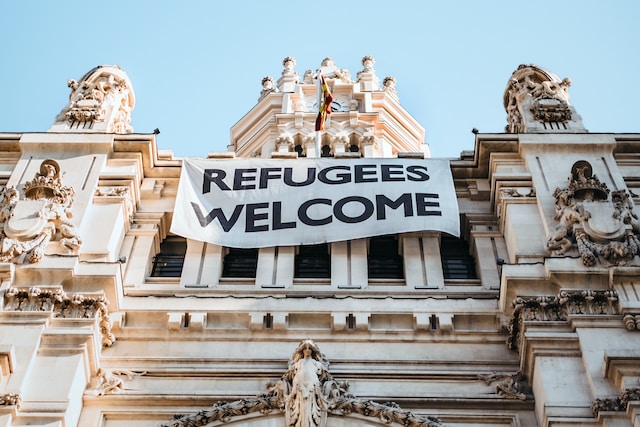
Canada has long been hailed as a country that upholds the rights of refugees and displaced individuals. The nation’s refugee law seeks to offer protection to people in need, reflecting its commitment to international conventions and human rights. However, navigating the intricacies of immigration law can be daunting, especially when one’s future hangs in the balance. This article delves into the refugee law in Canada, the protections it offers, and the common challenges one might face.
What is Refugee Law in Canada?
Refugee law in Canada is an amalgamation of both national legislation and international commitments. The country’s dedication to upholding the rights of refugees is evident through its adherence to the 1951 United Nations Convention Relating to the Status of Refugees and the 1967 Protocol. These international agreements, to which Canada is a signatory, establish the foundational principles of refugee law on a global scale. Domestically, Canada reinforces these principles through the Immigration and Refugee Protection Act (IRPA). This act serves as a guiding document, delineating the specifics of how the country assesses refugee claims, determines eligibility, and ensures protections for those who qualify. Through this synthesis of international and national regulations, Canada seeks to offer a comprehensive and compassionate approach to individuals in dire need of refuge.
Who Qualifies as a Refugee?
Canada’s commitment to safeguarding vulnerable populations is reflected in its classification of refugees, which is delineated into two primary categories, ensuring a comprehensive approach to those seeking asylum.
- Convention Refugees: This category pertains to individuals who, due to an inherent or deeply-rooted fear of persecution in their homeland, seek refuge in Canada. The grounds for this fear can be manifold, ranging from one’s race, religion, and nationality to political opinions or affiliations. Moreover, it could stem from an individual’s membership in a particular social group that may be targeted or marginalized in their country of origin. The term “Convention” alludes to the international conventions to which Canada is a signatory, emphasizing the country’s alignment with global standards and obligations in recognizing and protecting such individuals.
- Persons in Need of Protection: This classification is broader and captures individuals who might not necessarily fit the strict criteria of the Convention Refugees but are still in a precarious situation. It concerns individuals who, if sent back to their native countries, would face extreme dangers. These dangers can manifest as torture, a direct threat to their life, or a risk of undergoing cruel and unusual treatment or punishment. This category underscores Canada’s humanitarian approach, acknowledging that there are numerous reasons someone might be in danger beyond the convention’s outlined persecutions.
Navigating the Claims Process
After arriving in Canada, claimants must submit their refugee claim. If found eligible, they will have their case heard by the Immigration and Refugee Board of Canada (IRB), an independent administrative tribunal. Here, it’s advisable to have a legal professional near, as expert guidance can help streamline the process and enhance the likelihood of a favorable outcome.
What If My Application Is Denied?
Being confronted with a denied refugee claim can be an emotionally overwhelming experience, stirring a mixture of frustration, fear, and uncertainty. Yet, it’s essential to remember that a rejection is not the end of the road; the Canadian immigration system offers recourse for those who face this setback.
When an application is denied, claimants are not left without options. One of the primary paths they can take is to appeal the decision through the Refugee Appeal Division (RAD) of the Immigration and Refugee Board (IRB). The RAD serves as a review body to ensure that the initial decision was made fairly and in line with the legal standards. During this appeal process, new evidence can be presented, allowing the appellant another chance to reinforce their claim.
Common Immigration Challenges in Canada
Navigating Canada’s refugee and immigration process is not without its hurdles:
- Documentation: Ensuring all paperwork is accurate and up-to-date can be challenging, especially for those who’ve fled their homes in haste.
- Credibility: The IRB assesses the credibility of every claim. Discrepancies in a claimant’s story, even if minor, can be grounds for refusal.
- Safe Third Country Agreement: This agreement between Canada and the U.S. stipulates that individuals seeking refugee protection must make their claim in the first safe country they arrive in. This has presented challenges for claimants who first land in the U.S. but wish to seek asylum in Canada.
Immigration Detention and Deportation in Canada
Not all who arrive in Canada are allowed to stay while their refugee claims are processed. In some instances, individuals are detained if their identity is in doubt or if they’re deemed a flight risk or danger to the public. Deportation can be the eventual outcome for those whose refugee claims are denied and have no further legal avenues to remain in Canada.
However, Canada prioritizes the principle of “non-refoulement,” ensuring no one is sent back to situations where they might face danger. Still, understanding one’s rights during detention and potential deportation is crucial. At such times, the guidance of a legal professional becomes indispensable.
Canada’s refugee law reflects its global commitment to safeguarding the rights and wellbeing of displaced individuals. However, the process can be intricate and filled with challenges. As such, being informed, understanding one’s rights, and having the support of professionals well-versed in immigration law can make a monumental difference.
For anyone navigating this journey, remember that while the path may be filled with hurdles, understanding your legal rights and protections is the first step towards securing a safer future in Canada.
Back to blogs